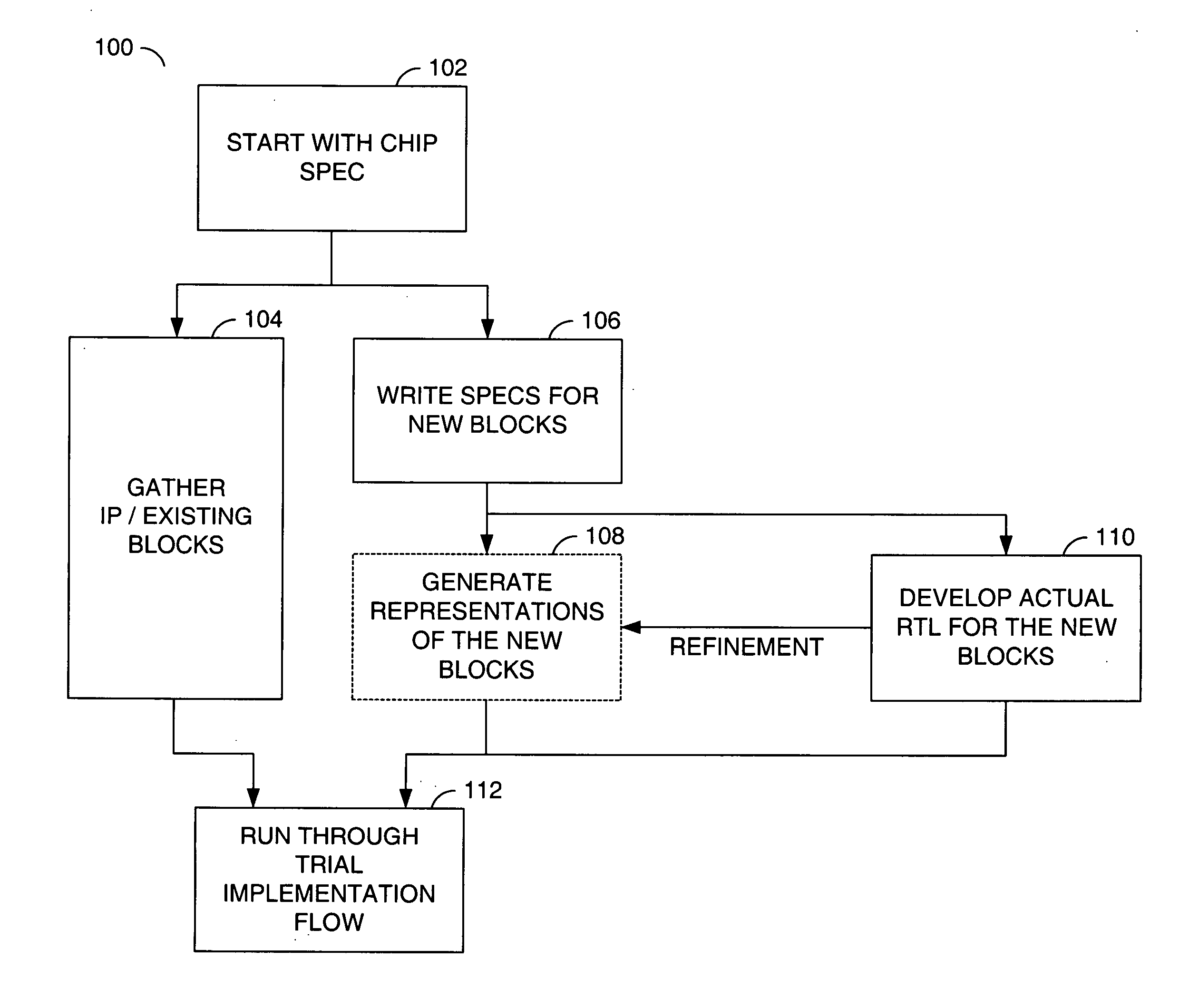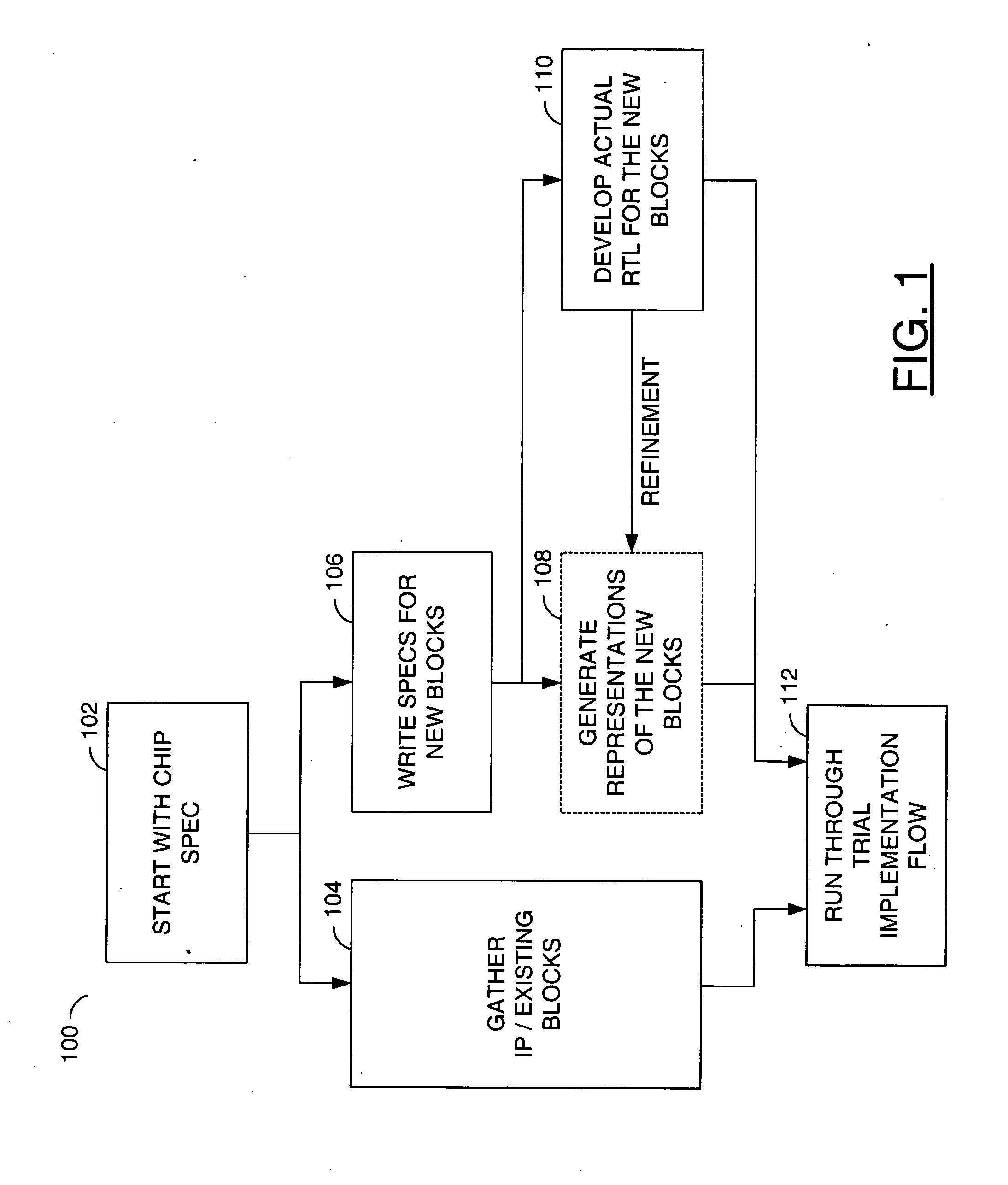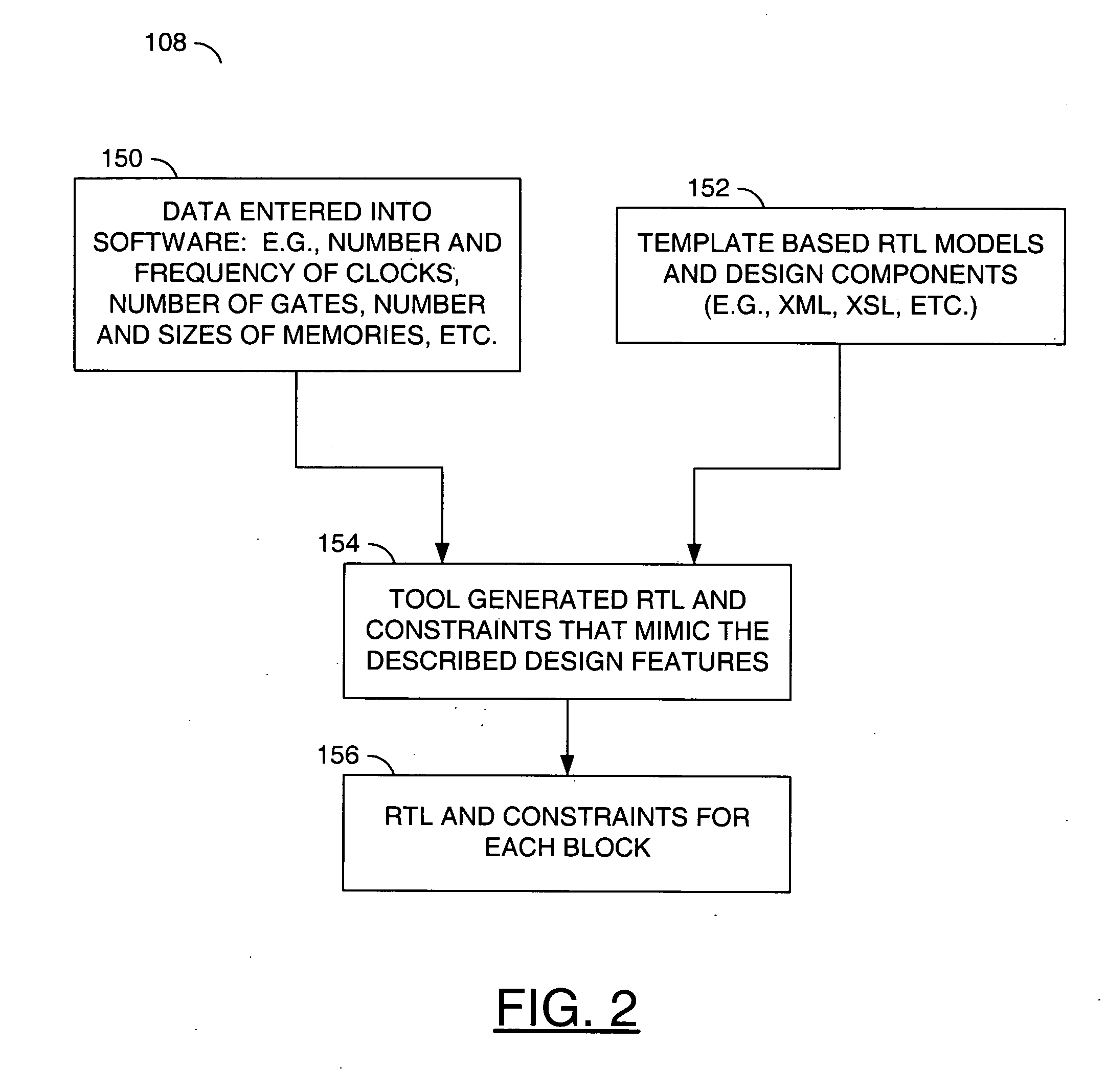Resource estimation for design planning
a technology of resource estimation and design planning, applied in the direction of cad circuit design, program control, instruments, etc., can solve the problems of complex designs that are suitable candidates for use with platform (or structured) application specific integrated circuits (platform asics), design cannot fit the selected platform, device or slice, and can suffer a major set-back
- Summary
- Abstract
- Description
- Claims
- Application Information
AI Technical Summary
Benefits of technology
Problems solved by technology
Method used
Image
Examples
Embodiment Construction
[0014] Referring to FIG. 1, a block diagram is shown illustrating a portion of a design planning flow 100 in accordance with a preferred embodiment of the present invention. The design planning flow 100 may comprise a block (or step) 102, a block (or step) 104, a block (or step) 106, a block (or step) 108, a block (or step) 110 and a block (or step) 112. The block 102 may comprise an integrated circuit (or chip) design specification gathering step. The block 104 may comprise an intellectual property (IP) / existing block gathering step. The block 106 may comprise a new block specification writing step. The block 108 may comprise a representative (or dummy) block generating step. The block 110 may comprise a development step for generating real register transfer level (RTL) representations of the new blocks. The block 112 may comprise a trial implementation flow step.
[0015] In the block 102, specifications for an integrated circuit (or chip) design may be gathered. In the block 104, i...
PUM
 Login to View More
Login to View More Abstract
Description
Claims
Application Information
 Login to View More
Login to View More - R&D
- Intellectual Property
- Life Sciences
- Materials
- Tech Scout
- Unparalleled Data Quality
- Higher Quality Content
- 60% Fewer Hallucinations
Browse by: Latest US Patents, China's latest patents, Technical Efficacy Thesaurus, Application Domain, Technology Topic, Popular Technical Reports.
© 2025 PatSnap. All rights reserved.Legal|Privacy policy|Modern Slavery Act Transparency Statement|Sitemap|About US| Contact US: help@patsnap.com



